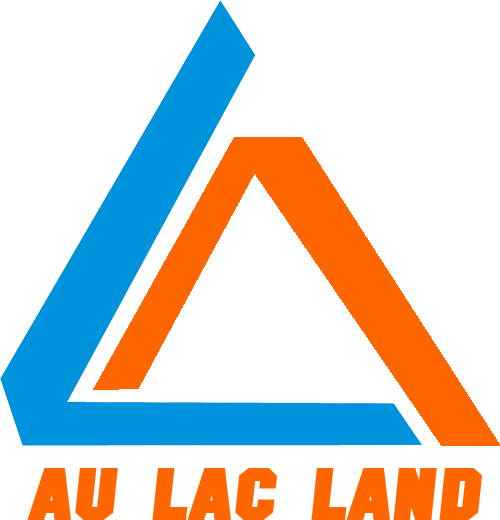 Mo-Tel House / Office S&M. Image © French + Tye
Mo-Tel House / Office S&M. Image © French + Tye
As fleeting as trends may be, they have an uncanny ability to resurface time and time again. We witness this phenomenon in the world of fashion, where once-discarded clothing pieces make a triumphant return to the spotlight. And the realm of interior design is no exception. While this century has celebrated subtle sophistication and clean lines, an appreciation for bold retro elements has breathed new life into residential and commercial spaces. From vibrant colored walls to geometric-patterned floors and vintage-inspired furniture, there's a renewed fascination with design elements from the second half of the 20th century, particularly the 1950s to the 1980s.
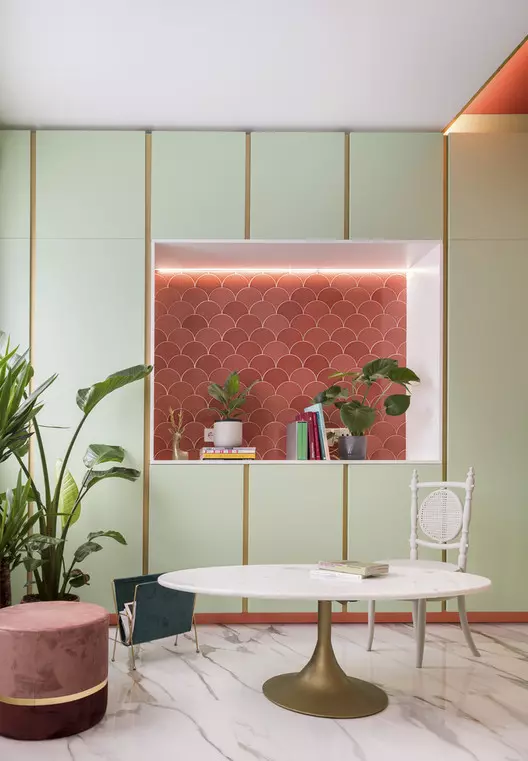 Image Source: Sanaulac.vn
Image Source: Sanaulac.vn
But it's not merely about incorporating outdated components into contemporary architectural projects. To achieve a modern aesthetic, it's essential to reinterpret, revitalize, and seamlessly blend these retro elements with contemporary materials. The key lies in combining old forms with modern materials and finishes. While materials such as ceramic tiles and terrazzo have been used for centuries, advancements in technology and manufacturing techniques have transformed them into modern materials capable of achieving a refreshed retro look.
 Lavabo Tri Suave / Marília Zimmermann Arquitetura e Interiores. Image © Denilson Machado - MCA Estúdio
Lavabo Tri Suave / Marília Zimmermann Arquitetura e Interiores. Image © Denilson Machado - MCA Estúdio
In exploring this resurgent aesthetic, let's delve into the design features taking over living spaces, especially kitchens, bathrooms, and common areas, along with the materials that make this style possible.
Geometric Cladding: Ceramic and Hydraulic Tiles
Square and rectangular ceramic tiles are renowned for their versatility, durability, water resistance, and easy maintenance. Similarly, cement-based hydraulic tiles offer design flexibility with their intricate patterns. Both types of tiles have experienced immense popularity from the 1950s to the 1970s. During this time, they were available in a wide range of colors, from pastel hues in the 1950s to bright greens, turquoise, yellows, and oranges in the swinging 60s and disco-loving 70s.
Today, vintage-inspired ceramic and hydraulic tiles have seen a resurgence in interior design, particularly in kitchen and bathroom cladding. While some tiles have adopted muted contemporary shades, many others have embraced the classic retro colors. Thanks to automated processes and innovations like digital printing, ceramic tile designs have evolved beyond simple shapes, offering a vast array of shapes, textures, thicknesses, and sizes. These modern materials can create complex geometric surfaces that exude a modernized retro aesthetic.
 Rathmines House / MRTN Architects. Image © Tatjana Pitt
Rathmines House / MRTN Architects. Image © Tatjana Pitt
Bold Colors: Water-based Paint and Pigmented Concrete
Bold colors are an essential component of retro design. In the 1950s, pastel shades like soft pink, mint green, and turquoise dominated. The vibrant 1970s introduced saturated hues like avocado green and mustard yellow, while the 1980s brought back pastels and also embraced primary colors and neons. Though the 1990s ushered in an era of whites and neutrals, modern interiors now feature playful color schemes inspired by the 1950s to 1980s. Kitchens, in particular, often pair pastel shades with contemporary countertops, cabinets, and appliances.
Colors can be incorporated in various ways, from tiled details and accessories to entire walls. House paint has evolved significantly, with most paints today being water-based. Unlike the oil and resin-based paints of the past, water-based paints offer excellent color retention, are more environmentally friendly, dry faster, and produce fewer odors. These innovations enable designers to infuse a retro influence in a healthier and more effective manner. Additionally, pigmented concrete sinks with vibrant tones and unique shapes can add a powerful pop of color, transforming bathrooms into retro havens.
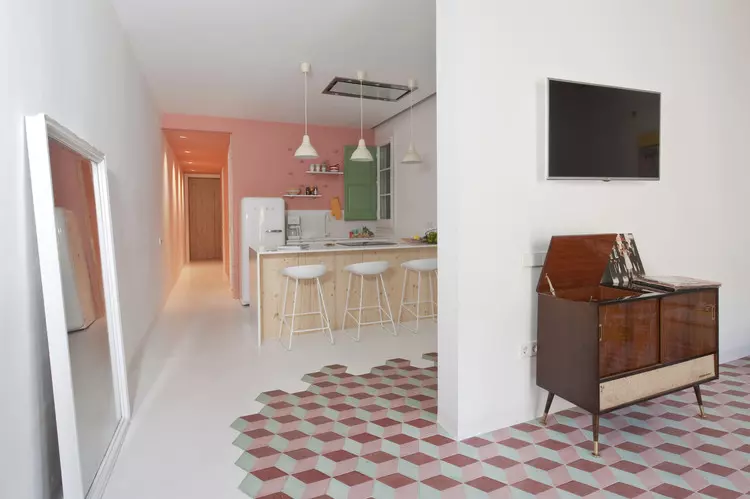 Mo-Tel House / Office S&M. Image © French + Tye
Mo-Tel House / Office S&M. Image © French + Tye
Intricate Patterns: Terrazzo
Inspired by the pop art movement, the mid-20th century witnessed the rise of highly expressive patterns in wallpapers and tiles. And when it comes to intricate patterns with a strong personality, nothing quite matches the eye-catching beauty of terrazzo. Traditionally composed of marble or granite chips set in concrete and polished, terrazzo was a staple in homes from the 1950s to the disco era of the 1970s. However, it quickly regained its popularity in modern interiors due to its incredible capacity for reinvention.
Today, 90% of terrazzo surfaces are made with an epoxy resin instead of cement. This shift offers several advantages, including longer lifecycles, greater design flexibility, and faster installation. Epoxy terrazzo remains one of the most durable and cost-effective flooring finishes, capable of conveying a retro statement across various surfaces. Thanks to improved manufacturing processes and modern components, epoxy terrazzo has become a functional and versatile alternative for achieving a strong retro aesthetic.
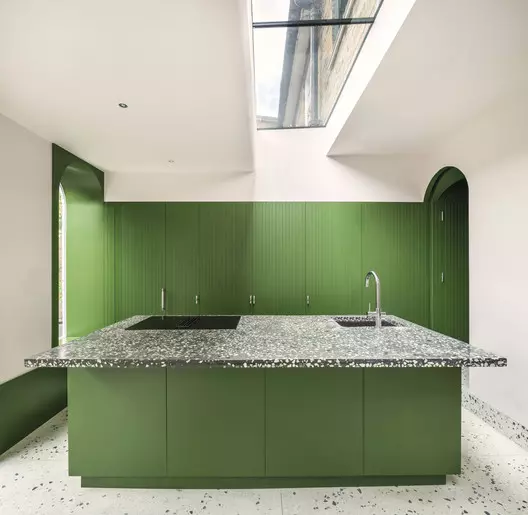 The Budapest Café / Biasol. Image Courtesy of Biasol
The Budapest Café / Biasol. Image Courtesy of Biasol
Vintage-Inspired Objects: Furniture and Accessories
Furniture and accessories play a crucial role in creating a retro aesthetic. The 1960s saw the rise of funky-shaped furnishings like the blow-up chair, while the 1970s embraced bigger and bulkier designs. The 1980s introduced pastels, ruffles, neons, and mirrored furniture. Retro furniture is characterized by boldness and extravagance, with unique shapes, bright hues, and vintage-inspired gold metallic accents adorning lighting fixtures and finishes.
In recent years, these design elements have made a comeback in modernized forms. Manufacturers now produce furnishings that resemble those from the 1960s and 1970s but feature updated, high-performance materials. With the help of new technologies, contemporary materials such as glass, acrylic, stainless steel, plastic, polycarbonate, and foam can be durable, strong, and molded into virtually any shape, allowing for a seamless blend of modern and retro styles.
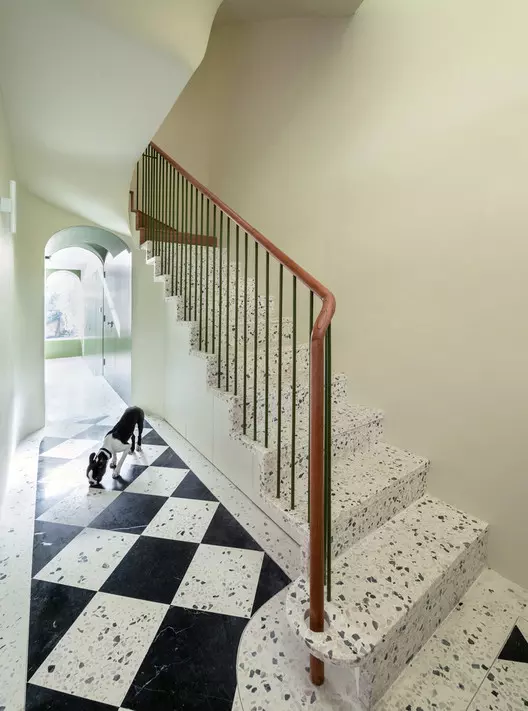 Lavabo Tri Suave / Marília Zimmermann Arquitetura e Interiores. Image © Denilson Machado - MCA Estúdio
Lavabo Tri Suave / Marília Zimmermann Arquitetura e Interiores. Image © Denilson Machado - MCA Estúdio
 Pigmented concrete sinks / Kast. Image Courtesy of Kast
Pigmented concrete sinks / Kast. Image Courtesy of Kast
Opinions on trends may vary, and the retro aesthetic is no exception. While some may find it tacky and old-fashioned, there's no denying its resurgence in interior design. As trends always come back, retro aesthetics have found their place again and show no signs of fading away any time soon.
This article is part of the ArchDaily Topics: Aesthetics, proudly presented by Vitrocsa, the original minimalist windows since 1992. Vitrocsa merges interior and exterior spaces with creativity. With 30 years of Swiss Made tradition, Vitrocsa designs minimalist window systems featuring the narrowest sightline barriers in the world. Their constant quest for innovation enables them to meet the most ambitious architectural visions. Each month, ArchDaily explores in-depth topics through articles, interviews, news, and projects. Learn more about our ArchDaily Topics. As always, we welcome the contributions of our readers. If you want to submit an article or project, contact us.
